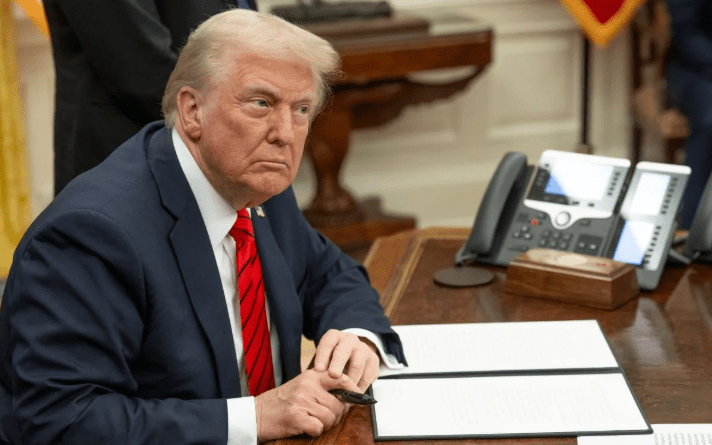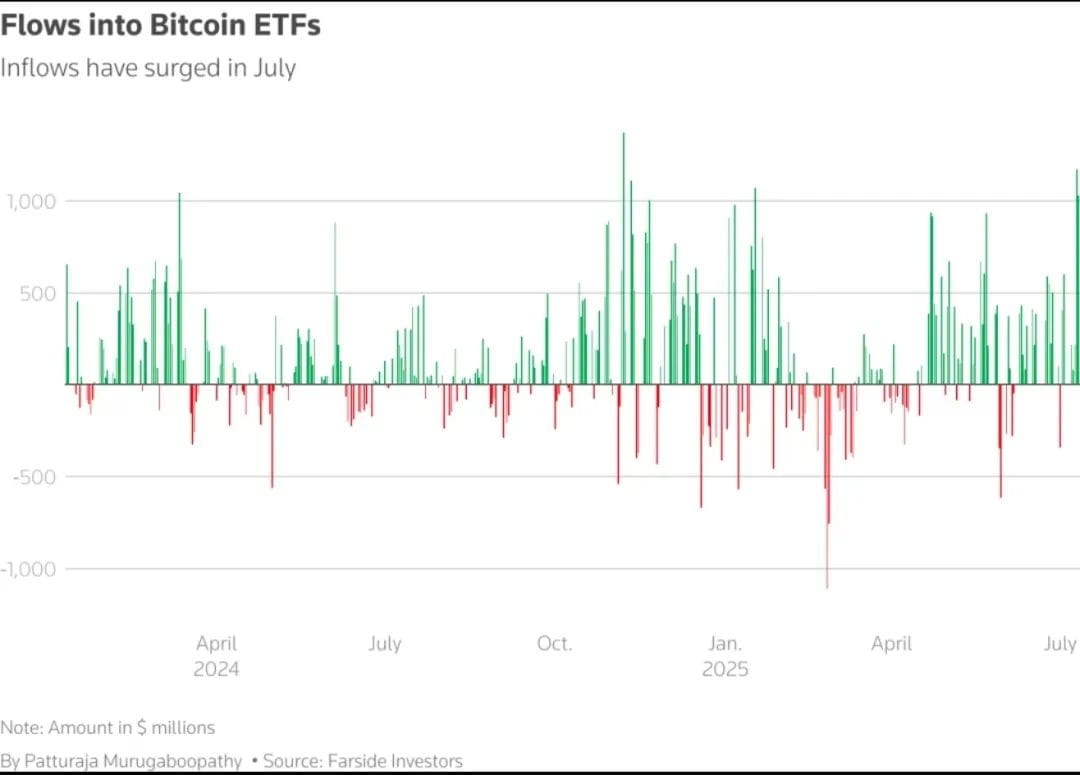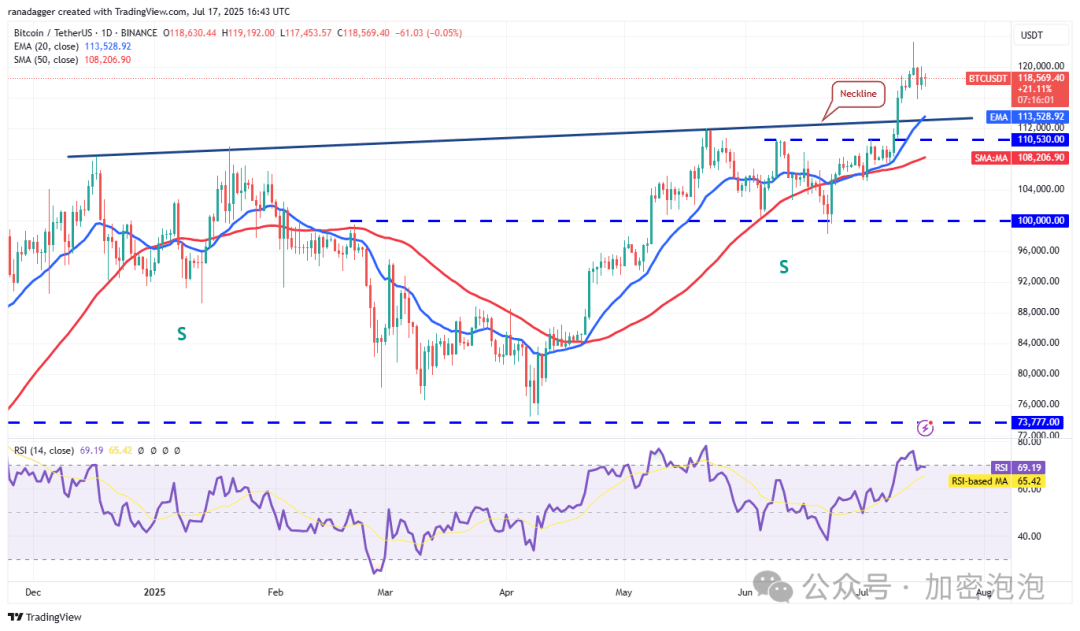On Friday (July 18), during the Asian market's early session, Bitcoin prices rose again, breaking through $120,500, with a 24-hour increase of 1.7%. Meanwhile, Ethereum rose over 3% and is now challenging the important $3,500 level.
According to a report by the Financial Times on Thursday, U.S. President Trump plans to sign a new executive order allowing pension accounts to invest in cryptocurrencies and other 'alternative assets'. If the policy is ultimately implemented, it means that pension accounts like 401(k)s could invest in a broader range of asset classes beyond traditional stocks and bonds, including crypto assets, gold, and private equity. This potential reform is seen by the market as a significant positive.

This news has attracted widespread attention in the market and has become a key factor driving Bitcoin to break through $120,000. Meanwhile, XRP has also broken the record set in 2018, reaching a new high; Ethereum has stabilized above $3,300, with a 24-hour increase of 3.12%, peaking at $3,477.70.
Policy winds are frequently blowing, and U.S. regulation is comprehensively ramping up in the crypto market.
The good news does not stop with the presidential executive order. Just this week, the U.S. House of Representatives passed the 'GENIUS Act', establishing a federal regulatory framework for the stablecoin market, along with two other bills related to digital assets, all of which have now been submitted to the Senate for review.
These bills are seen as a key step for the U.S. towards 'comprehensive regulation of the crypto market'. The industry generally expects Trump to sign some of these bills soon, making them officially effective.
'Such legislation will clear obstacles for traditional capital, especially long-term institutional capital, to enter the crypto market,' said Adrian Fritz, head of research at 21Shares. Currently, 'long-term funds' such as pensions and endowments account for less than 5% of the spot Bitcoin ETF, with another 10%-15% coming from hedge funds and wealth management institutions.
However, Fritz also pointed out that the largest buyers of these ETFs are still retail investors because many wealth management institutions are actually allocating crypto assets for high-net-worth clients.
According to Vanda Research data, the rise in Bitcoin prices is highly correlated with the entry of retail funds. Whether it's Trump's high-profile announcement of a 'crypto-friendly' position at the end of 2024 or the recent rise, retail investors have always been at the forefront.

ETFs continue to attract capital, and there is still room on the technical front.
In terms of capital flow, the U.S. spot Bitcoin ETF saw a net inflow of nearly $800 million this Wednesday, marking ten consecutive rises, with a cumulative net inflow of over $5.2 billion since July 2. Stable capital injection has become a source of confidence for the bulls.
From a technical perspective, Bitcoin's price is slightly consolidating around $120,390 but still remains above the 20-day exponential moving average (EMA). Although a long upper shadow appeared during the previous rise, indicating that there is still resistance from bears at the $120,000 level, the overall market sentiment is bullish.

The short-term support level is near the 20-day EMA (approximately $113,528). If this position holds and rebounds, the bulls may once again attempt to push towards $123,218. Once it stabilizes above this resistance area, Bitcoin may potentially rise to $135,729, and even challenge the significant $150,000 level.
However, if it falls below $110,530, the bears will regain control, and the market may retreat to around $105,000, requiring close attention to subsequent momentum.
Funds are rotating from BTC, with ETH and altcoins taking over the rise.
Besides Bitcoin, Ethereum is also becoming the market focus. Recently, there has been a significant trend of funds flowing from BTC to ETH. Especially with legislative positives like the 'GENIUS Act', investor attention towards ETH and the stablecoin-related ecosystem has noticeably increased.
ETH is currently holding the key support range of $3,315 and has been strengthening for several consecutive days; other altcoins like XRP have also strongly broken through due to the market's renewed confidence, breaking historical highs and showing a broad rotational effect.
Analysts point out that if Ethereum can stabilize and further break above the upper boundary of the triangle convergence structure, this rotational market is expected to fully open up, and the altcoin sector may welcome a new round of explosive growth.
Institutions are still observing, and retail investors remain the market's main force.
Although regulations are gradually becoming clearer, many institutional funds are still on the 'sidelines'. According to Simon Forster, co-head of global digital assets at TP ICAP, long-term investment institutions such as pensions will gradually enter the market after 2026.
Fritz also admitted: 'These institutions often enter last, but their funding far exceeds that of other types of investors.' Once they enter, it will significantly change the liquidity and stability structure of crypto assets.
Summary: Policy, capital, and confidence resonate together; where will Bitcoin's next stop point?
The U.S. government's attitude towards the crypto market is clearly changing. From presidential executive orders to multiple bills passed by the House of Representatives, to continuous net inflows into ETFs, the entire market's institutional and capital layers are being restructured.
Bitcoin's technical outlook remains strong; breaking through $120,000 is just the beginning. Meanwhile, Ethereum and altcoins are also rising, releasing market liquidity. The upcoming key observations will focus on:
Speed of policy implementation
Intensity of technical breakthroughs
Pace of institutional capital entry
If these three aspects continue to improve, then Bitcoin reaching $130,000 or even higher will no longer be just a vision.